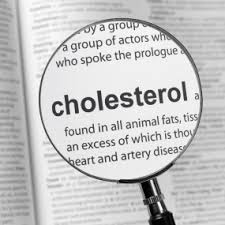Cholesterol is a white waxy substance that’s found naturally in the body, and it is key to keeping every cell wall working well. The body uses cholesterol to make vital substances such as vitamin D and various hormones; therefore we do need some in cholesterol in our bodies. However, cholesterol may become a problem when the level in our blood is too high – if you have more cholesterol than your body needs, the result can be the build-up of fatty deposits in your arteries, which may affect your heart health. Most cholesterol is made in the liver; however a small amount comes from the diet. Eating too much saturated fat and trans fat (bad fats) can increase blood cholesterol levels, and replacing saturated fat and trans fat with mono- and poly-unsaturated fat (good fats) can help keep cholesterol levels in check.
However, not all cholesterol is alike: there are two main types, ‘bad’ and ‘good’.
Bad Cholesterol
Low-density lipoprotein (LDL) is so-called ‘bad’ cholesterol, as this takes cholesterol from your liver to the body tissues for deposition. If there’s a high level of bad cholesterol in the blood, this can lead to cholesterol build up in the walls of your blood vessels, initiating the early stages of atherosclerosis, and increasing your risk of Coronary Heart Disease. This type of cholesterol can be reduced through healthy diet and lifestyle choices, including eating Flora pro.activ foods.
Good Cholesterol
High-density lipoprotein (HDL) is so-called ‘good’ cholesterol, and, unlike bad cholesterol, this transports cholesterol away from your blood vessels to the liver to be eliminated. Therefore, a high level of good cholesterol is thought to be heart healthy. Unlike bad cholesterol, where level should be kept to a minimum, increasing your level of good cholesterol can be a very positive step for your health. Key strategies to increase your good cholesterol level include exercising moderately, drinking small amounts of alcohol, and, if you’re a smoker, quitting smoking.
Target Cholesterol Levels
As aforementioned, to help keep your heart healthy, it’s important that your bad cholesterol remains low and your good cholesterol stays high. Government-advised target cholesterol levels are:
- Total cholesterol: less than 5 mmol/L for healthy adults, or less than 4 mmol/L for those at risk
- LDL-cholesterol: less than 3 mmol/L for healthy adults, or less than 2 mmol/L for those at risk
- HDL-cholesterol: higher than 1.0 mmol/L for men and 1.2 mmol/L for women
You can get your levels checked easily at doctors’ surgeries, walk-in clinics and in many pharmacies, and if your levels are outside the target ranges, it is worth consulting with a healthcare professional to decide an appropriate approach to positively modify your levels.
This post was brought to you by Flora

